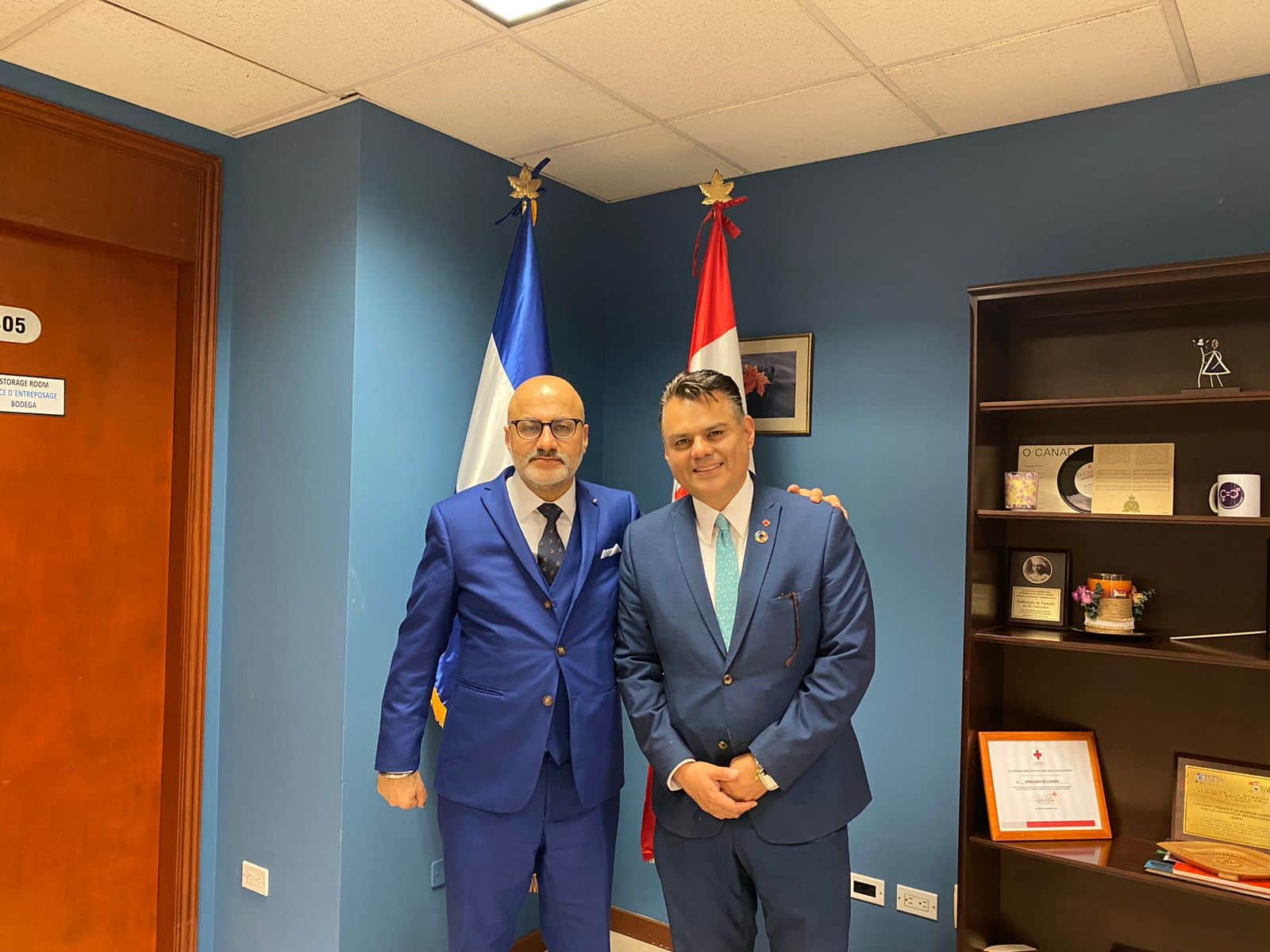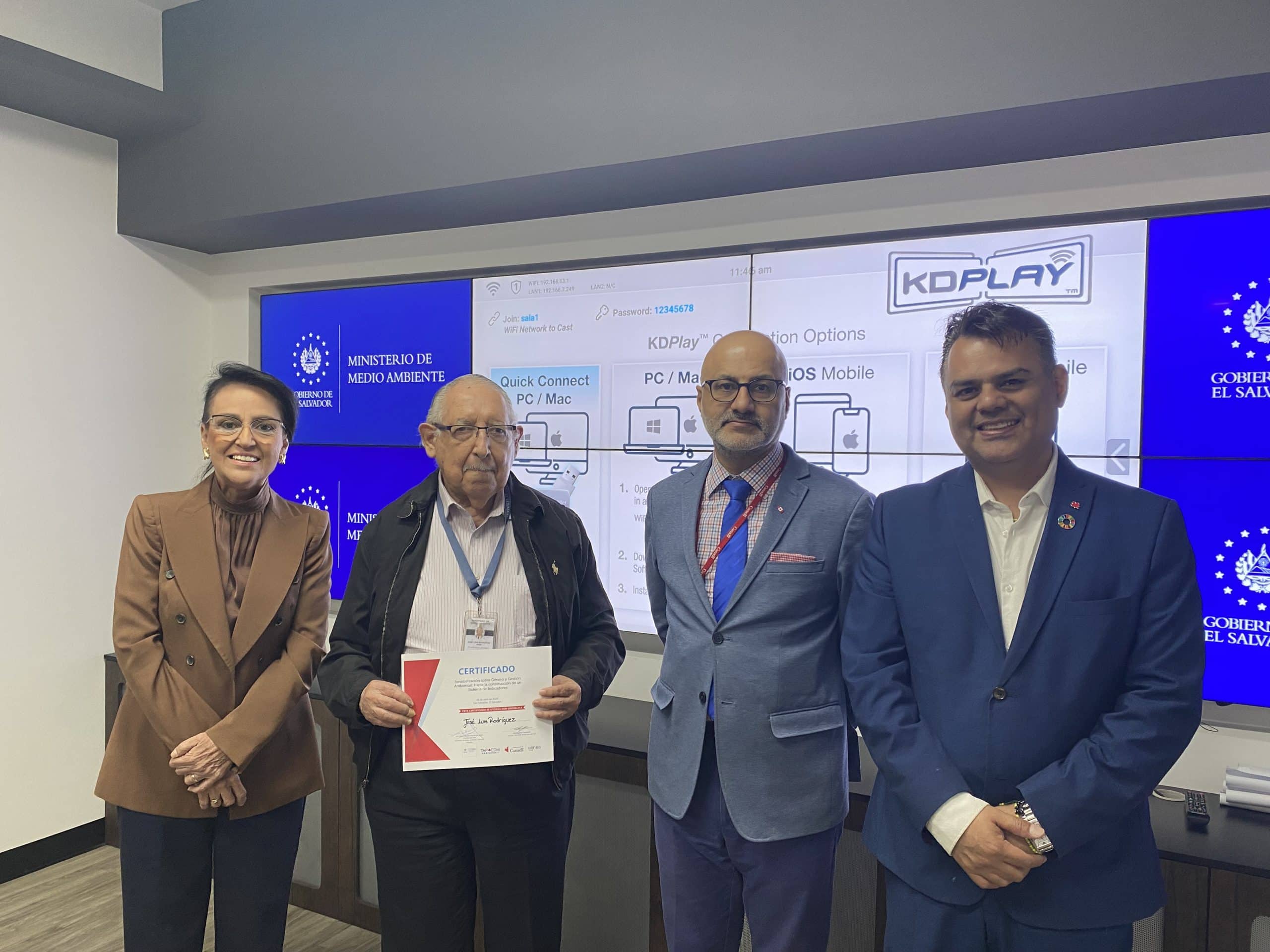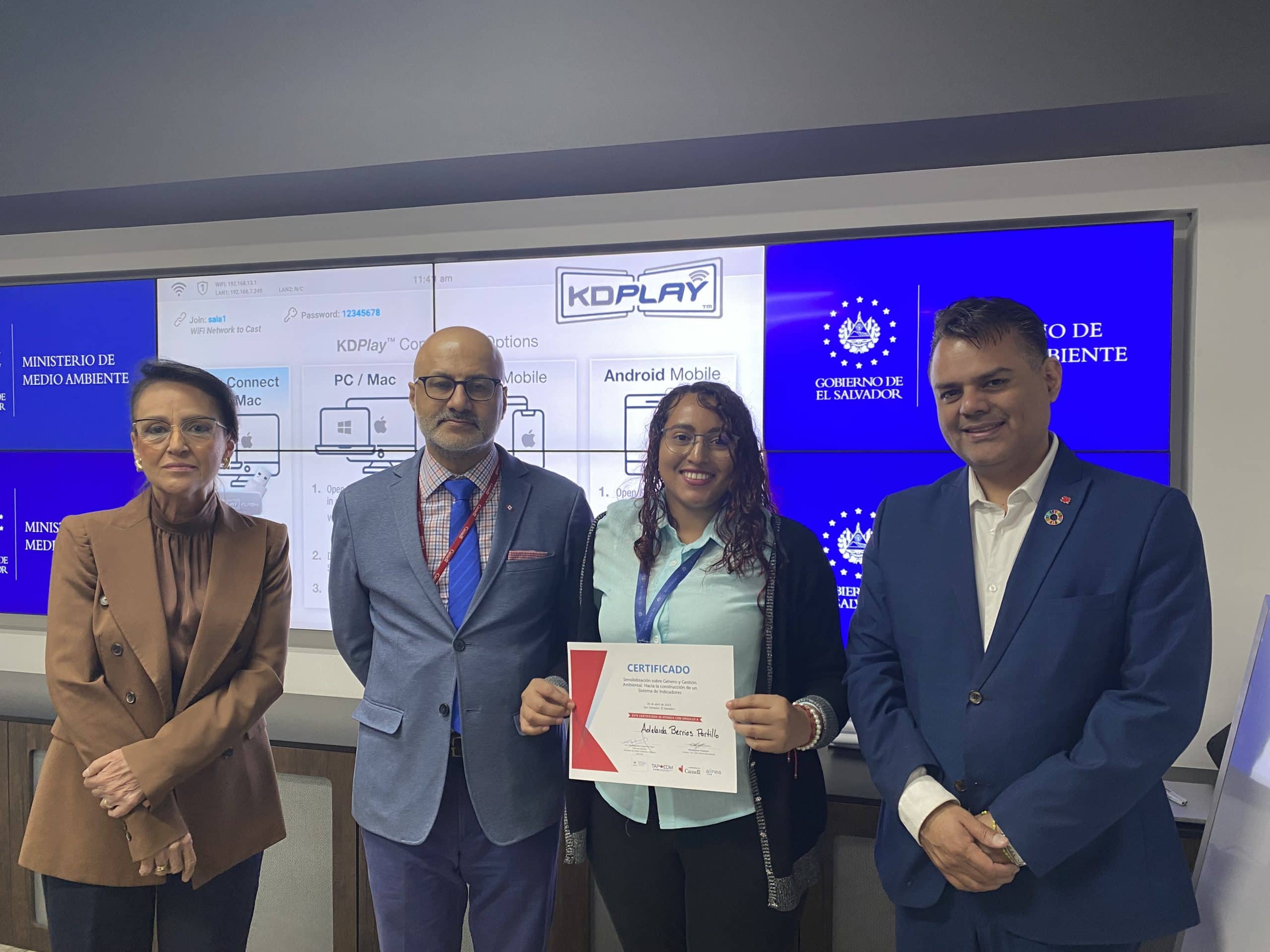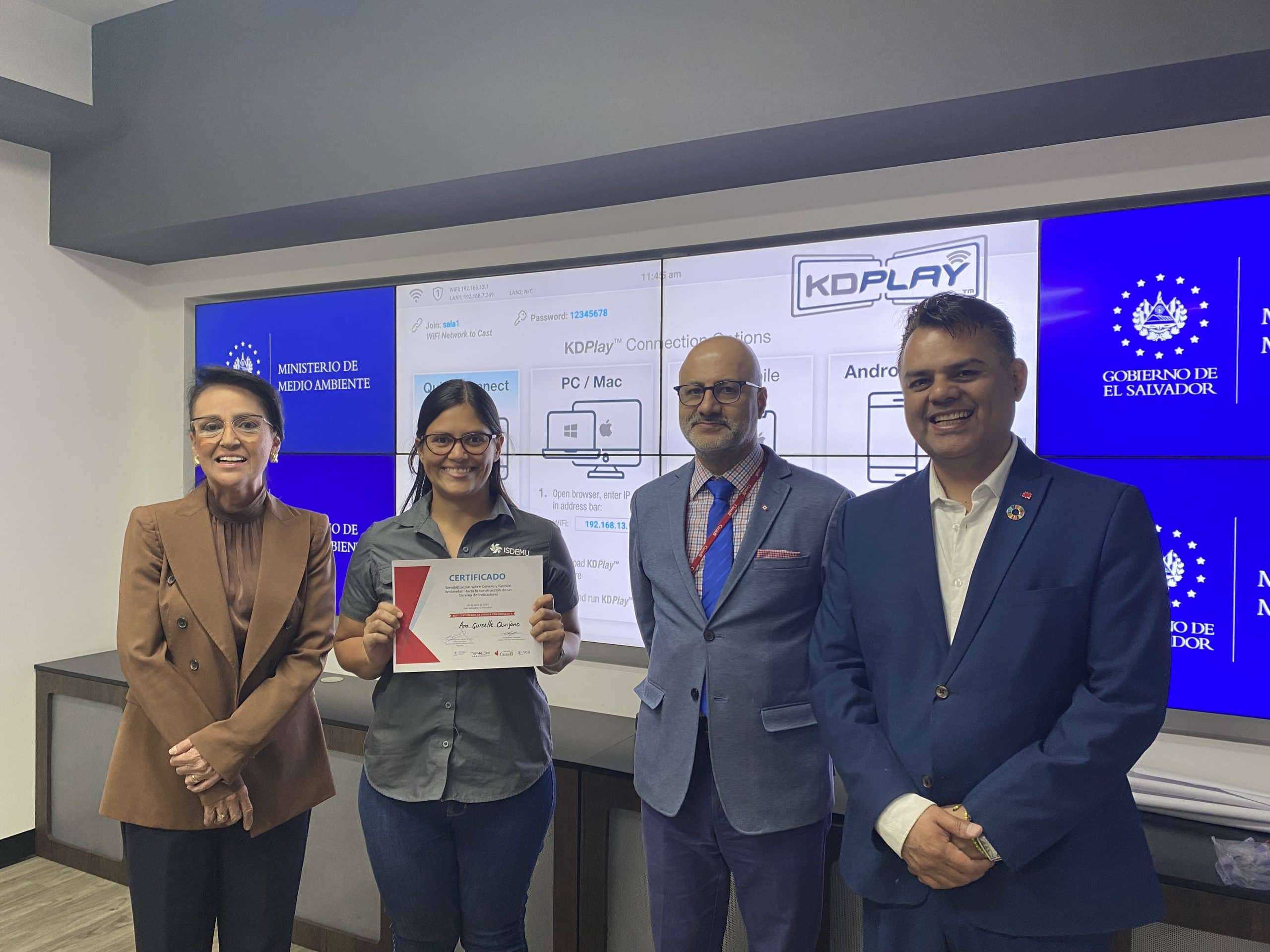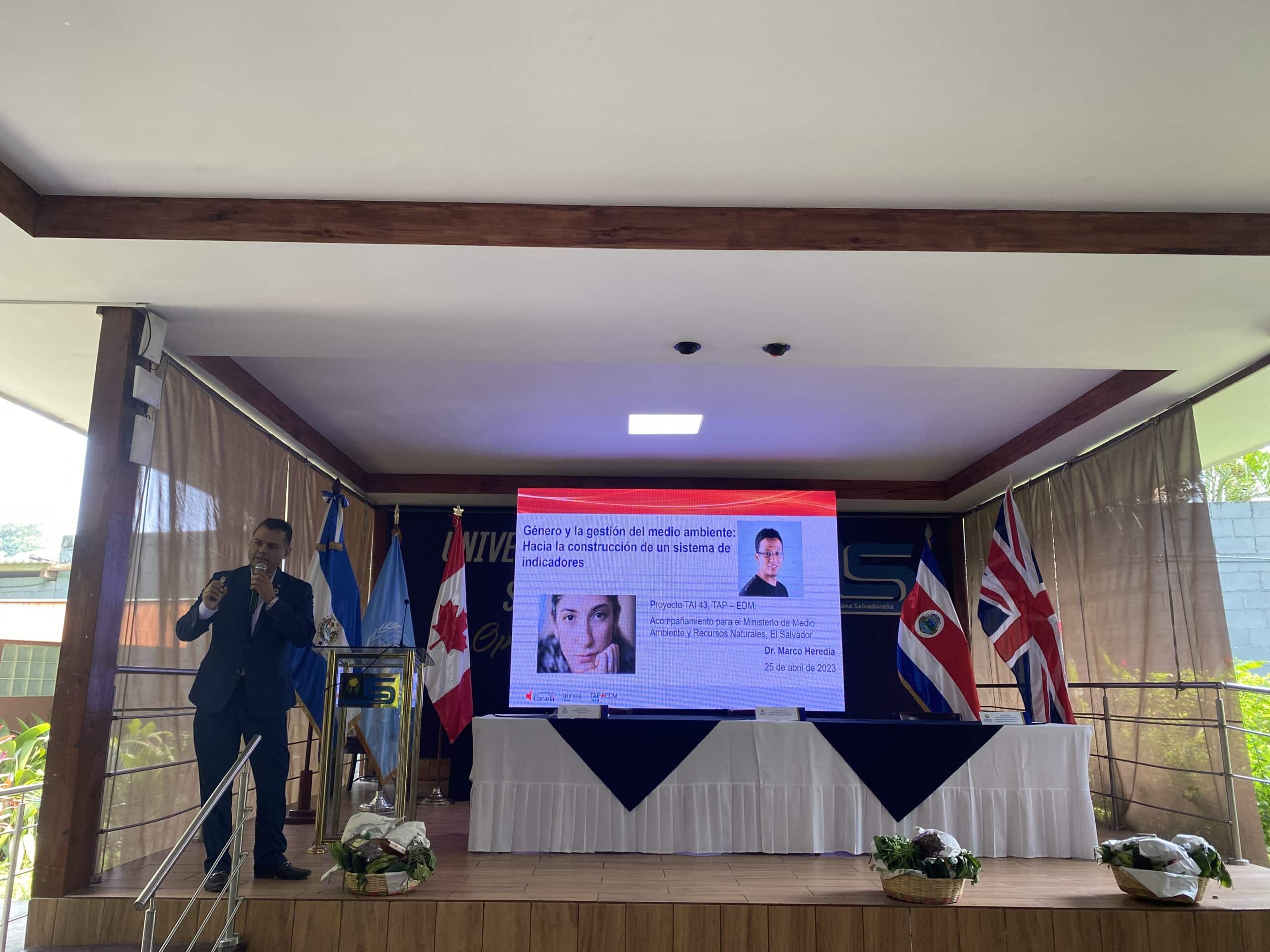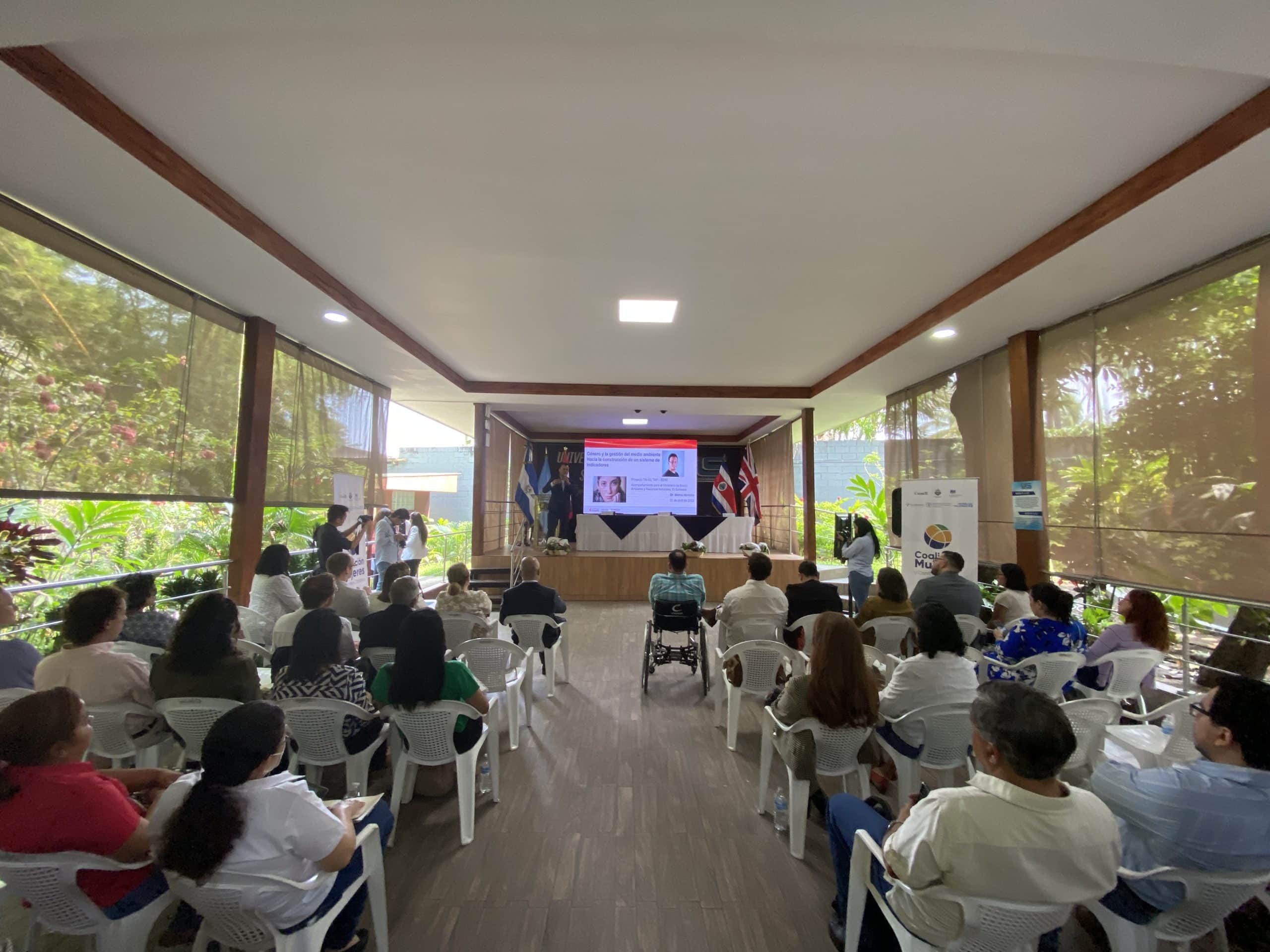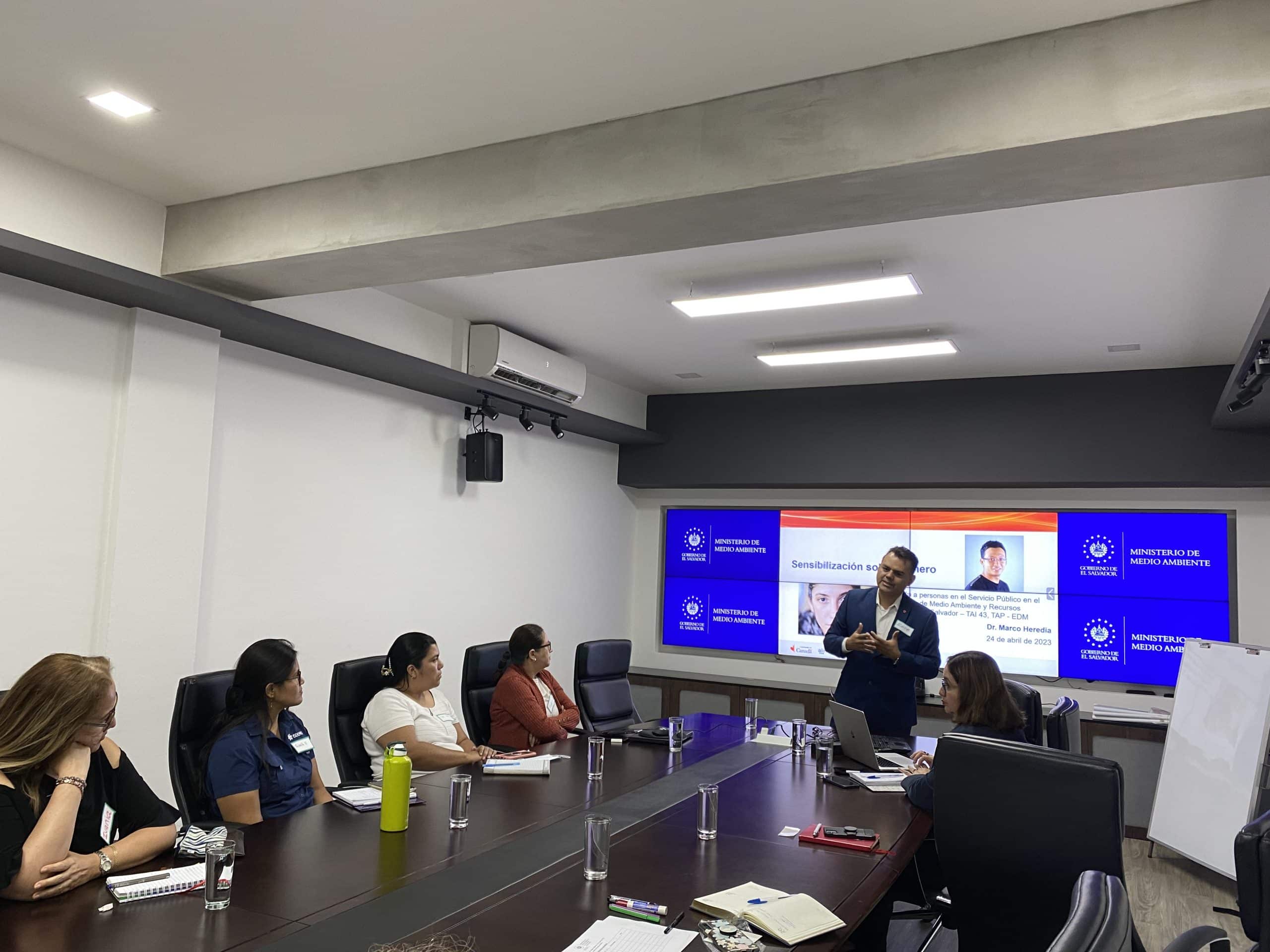Assessing Gender Equity: Using the Guide for Environmental Monitoring in El Salvador
By Dr. Marco Antonio Heredia Fragoso, Environmental and Climate Diplomacy Expert
The Technical Assistance Program – Expert Deployment Mechanism (TAP-EDM) initiative implemented by Alinea International and funded by Global Affairs Canada works collaboratively with Marco Heredia, an environmental and climate diplomacy expert and El Salvador’s Ministry of Environment and Natural Resources and the Gender and Institutional Policy Unit for Equality and Non-Discrimination to strengthen the capacity of key staff to develop and adopt well-informed and effective policies and programs to address gender gaps in environmental management. Last April, Marco conducted seminars at the Ministry in El Salvador. His role focused on implementing a groundbreaking initiative in Latin America and the Caribbean—an information collection Guide focused on Gender and Environmental Management.
In this blog post, Marco recounts his work providing technical assistance through training on best practices, strategies, and tools for collecting and analyzing disaggregated data and indicators, emphasizing the necessity of gender-responsive environmental management to ensure women’s access to environmental and climate justice.
In my recent travels, I overheard a comment on the need to promote gender equality from the perspective of our social life: our home. This individual highlighted how many men, arriving home after work, act as ‘passengers’—not engaging in household tasks or family care but instead requesting to see the “menu of the day” or “updates of the day’s events at home.” In several communities worldwide including Latin America, this trend echoes where the role of women often being expected to care for those they live with, is perpetuated. How can this societal issue change, when the conditions ensure such norms are repeated because this has “always been so”?
It is these types of social issues that make me reflect on my contributions to the Technical Assistance Partnership-Expert Deployment Mechanism (TAP-EDM), a short-term initiative delivered in El Salvador, implemented by Alinea International and funded by Global Affairs Canada.
My role in this project stemmed from a request from the Ministry of Environment and Natural Resources in El Salvador, aimed at proposing a “Guide for the collection of information, analysis, and indicators on gender equity and environmental management.” In addition, my work in El Salvador was centered on Canada’s Feminist International Assistance Policy (FIAP), which provides guidelines for identifying and addressing gender-related issues in international development efforts. I focused on identifying spaces where it would be possible to collect information on the participation of women, adolescents, and girls in the environmental management activities developed by the Ministry of Environment and Natural Resources of El Salvador. Based on this, I designed a set of indicators to measure this relationship and strengthen the capacity of this authority to design, implement and evaluate gender-responsive environmental management.
The United Nations Environment Program states that Latin America and the Caribbean are home to approximately 365 million women and girls. About 63 million live in rural areas and depend primarily on a close relationship with the environment and the use of natural resources. The population of El Salvador – and several countries in the region – is mostly female, with 53.3% of Salvadoran society composed of women. This majority is shown both in the cities and in the countryside, a situation repeated in each of the 14 departments that comprise the country.
Despite this population majority, only 11% of women are owners of productive agricultural land. In a higher percentage than women, men are the owners of the houses or land where farms are located or where the productive activities of a family are developed. Women own 43% of homes, while men own 57%. Some women face illiteracy rates of about 4% at different age groups, with higher rates for older women. 65% more women than men are not contributing to the workforce due to household or caregiving responsibilities. Men earn over 55 dollars more than women for the same job.
Through the development of the Guide, I was able to highlight pertinent data on activities relevant to social participation and management of natural resources. For example, over 15,380 people interacted with the Area of Culture and Environmental Education in 2022. 51.54% were women, and 48.46% were men. Additionally, no women received concessions for salt forest usage in 2022; all concessions went to men for various projects like salt works and aquaculture.
The Canadian Gender-Based Analysis Plus[1] tool has been fundamental to dissecting the steps and elements to guide the review of information and the eventual formulation or adjustment of policies, programs, and actions that allow us to transform our reality toward a world where there are no unequal burdens, where there is co-piloting in the decisions and actions of life and not passengers who end up not engaging in household tasks or family care.
As I reflect on my contributions to the TAP-EDM initiative in El Salvador, it is evident that addressing social issues, such as the ‘passenger’ dynamic in households, is vital. Through the development of a Guide for collecting information on gender equity and environmental management, we can promote equity and create a pathway toward a fairer society where burdens aren’t unfairly distributed, decision-making isn’t lopsided, and ‘passengers’ no longer define roles within homes. The Canadian Gender-Based Analysis Plus tool has been instrumental in this pursuit, allowing us to review information and craft policies, programs, and actions that reshape our societal norms.
In my experience of over 23 years in environmental and climate change management, this Guide stands as a milestone. It holds the potential to drive tangible change by ensuring the equitable engagement of both women and men in safeguarding our natural resources and environment.
I salute the Ministry of Environment and Natural Resources who had the vision to undertake this project and I wish them much success in implementing this in this resource. With data, collected transparently and clearly, we can begin to move towards a society that allows us to level the ground, break the glass ceilings affecting women, youth, and other vulnerable communities, and then change the behavior of those who are “passengers” in their own homes.
Bibliographical references:
- Statistical Conference of the Americas, Economic Commission for Latin America and the Caribbean (2021), Proposed Biennial Program of Activities 2022-2023. Available here: https://www.cepal.org/es/organos-subsidiarios/conferencia-estadistica-americas
- United Nations Environment Programme (2023), Gender and the Environment in Latin America and the Caribbean. https://www.unep.org/genero-y-medio-ambiente-acciones-del-pnuma-en-america-latina-y-el-caribe
- Government of Canada, Women and Gender Equity Canada, Gender Based Analysis + (2023) https://women-gender-equality.canada.ca/en/gender-based-analysis-plus.html
- Ministerio de Ambiente y Recursos Naturales (2023), Guía para la recopilación de información, análisis e indicadores sobre equidad de género y gestión medioambiental.
[1] GBA Plus a Government of Canada commitment in the development of policies, programs and legislation since 1995. GBA Plus ensures the inclusion of women, men and gender-diverse people. Moreover, it draws on the insights of ‘intersectionality,’ a research and policy model that recognizes the complex composition of factors that shape and influence human lives.
